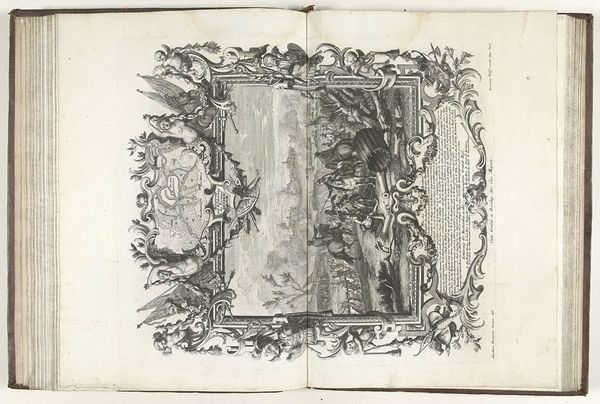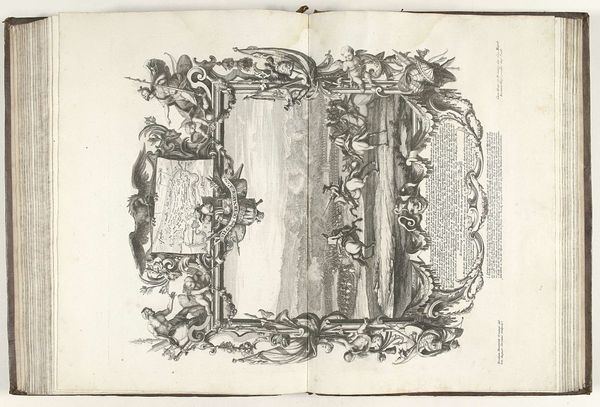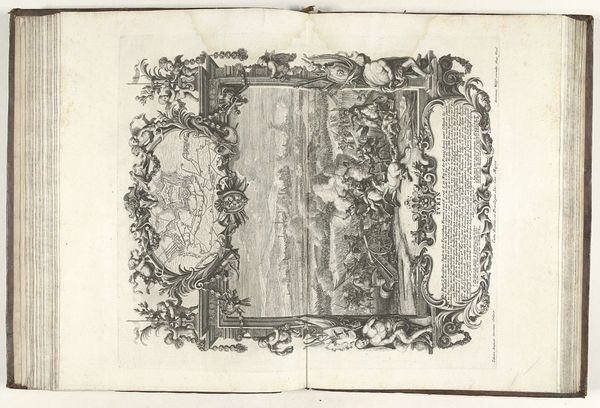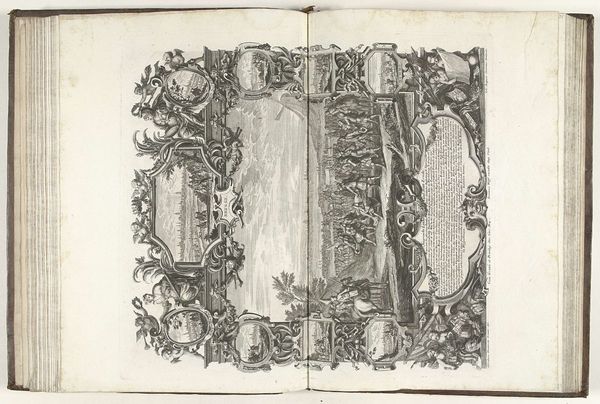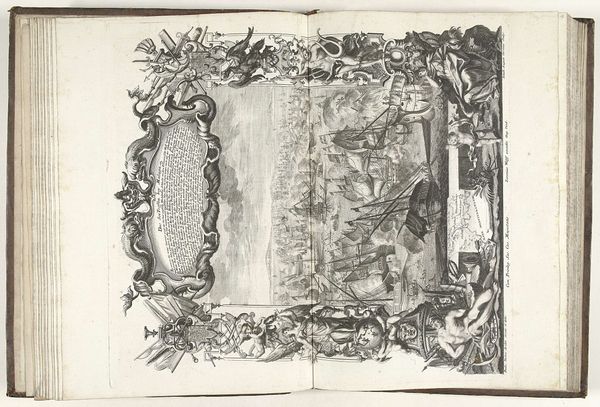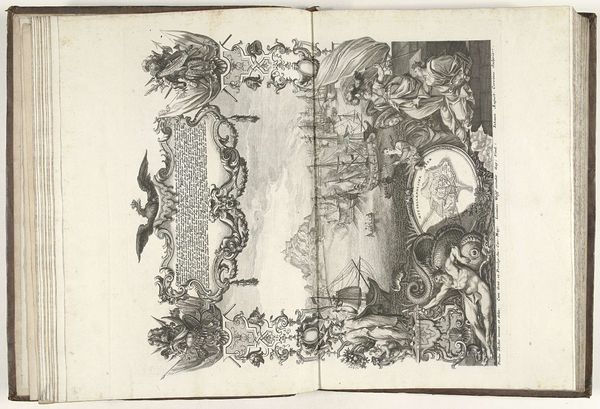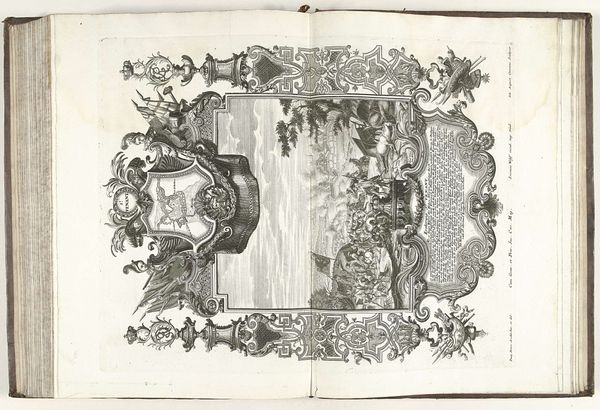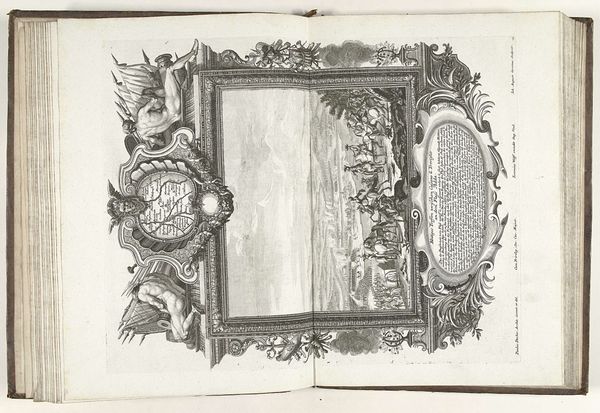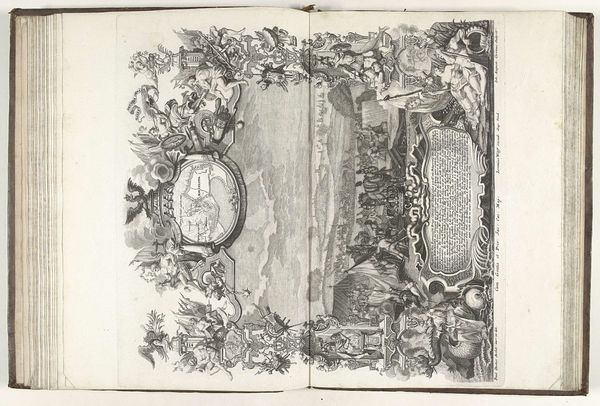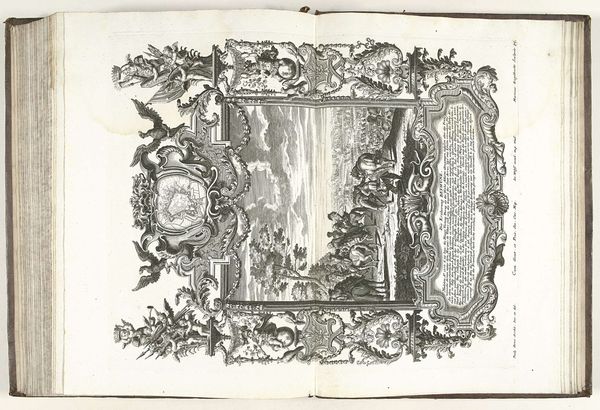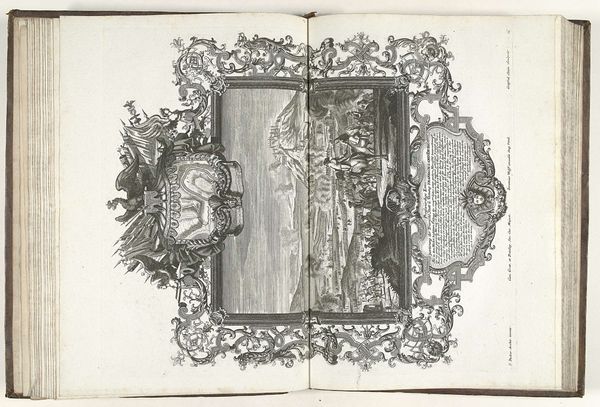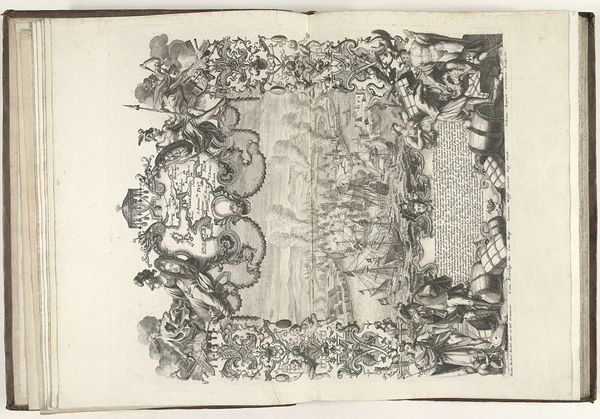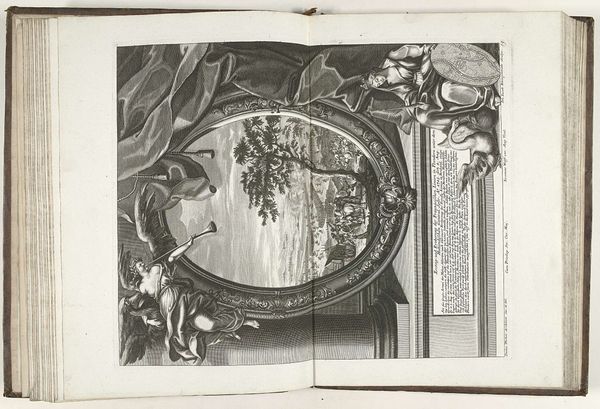
graphic-art, print, engraving
#
graphic-art
#
baroque
#
pen drawing
# print
#
ink drawing experimentation
#
engraving
Dimensions: height 470 mm, width 410 mm
Copyright: Rijks Museum: Open Domain
Editor: Here we have Joseph de Montalegre's "Inname van Aire, 1710," created between 1712 and 1715. It's a fascinating print, ink drawing almost bursting with Baroque detail, laid across two pages. The way the ornate frame merges with the scene depicted, it makes me wonder about the act of portraying such a conquest, it seems both celebratory and yet somehow contained by all this decoration. How would you approach this work? Curator: Given its materiality and creation within a specific historical context, I focus on its function as a commodity circulating within 18th-century society. The very process of creating multiple engravings implicates a system of production and consumption. Who were its intended buyers? Did they commission it? This work, "Inname van Aire", speaks to the intersection of art, politics and economic interests during the period of warfare. What does the choice of printing say about how images are disseminated and used to build support or legitimacy? Editor: That's a interesting way to view it. I hadn't thought so much about its circulation as an object, or a product of a production line. I was mostly thinking about the battle scene framed by all that dense, swirling, foliage. Curator: Exactly. The frame itself, meticulously rendered through printmaking techniques, is a crafted commodity meant to enhance and contain the image. Consider, though, how printmaking democratizes images, making them accessible beyond aristocratic circles, potentially shaping public opinion around the event portrayed. What materials were readily available? Why engraving? The accessibility of it shapes its role within society. Editor: I suppose I’m beginning to think differently now about the choices that artists make based on not only how it looks, but what is most resourceful given the time period in history. Also what function the art plays to that society at large, and how that artwork influences, maybe it's even used as propaganda in some shape or form. It’s given me a fresh outlook. Curator: And seeing that function and the physical creation, the labor and intent embedded in the material form is vital to that comprehension.
Comments
No comments
Be the first to comment and join the conversation on the ultimate creative platform.
